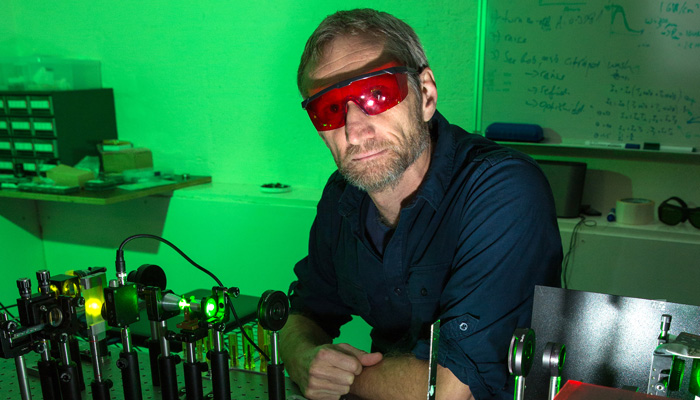A laser beam is a narrow beam of lightwaves with quite specific properties. Thinking about how wave energy works can help us understand laser beams.
One of the most notable events of 2011 was the earthquake of magnitude 9.1 just off the Pacific coast of Japan. Enormous destructive power was unleashed on the adjacent shores, and the resulting wave of energy spreading out from the epicentre sent large waves in all directions, some ultimately crashing into long coastlines many thousands of kilometres away, in Antarctica, Europe and South America.
Now imagine if all that energy could be channelled into a narrow beam of parallel waves that could transmit over those distances without spreading. Although the consequences would have been disastrous for those at the end of such a beam of energy, this is exactly how laser beams work.
Laser beams are waves of light that are channelled into a collimated beam – meaning the waves are parallel and very close together, and they don’t spread out much.

Professor Rich Mildren in the photonics lab at Macquarie University works with diamond laser beams.
A good example is those familiar green or red laser pointers – which can send a millimetre-sized beam over hundreds of metres with only a small increase in diameter.
Laser has a ‘coherent’ nature – it contains tiny wavelets of light that are all parallel to each other – and that’s the key distinction that sets lasers apart from other ‘incoherent’ light sources such as LEDs, lamps and spotlights.
It is this coherent property that makes laser so useful. Laser beams are used to transmit power, in the form of light, over large distances to enable sensitive detection of objects, to power drones or satellites, and to even disturb the orbits of space junk.
Laser’s coherent property also makes it possible to collect this light with a lens to bring all the power to a single tiny spot, a feature that is widely used in many areas of technology from cutting and welding metals, to detection of cancer cells, to reading and recording small nano-pits on CD or DVD player discs.



